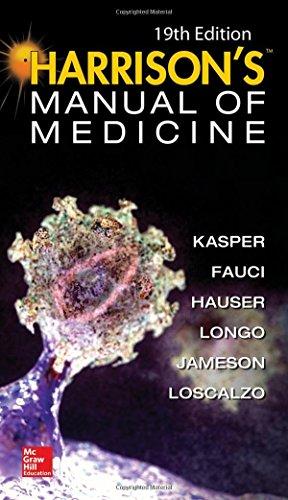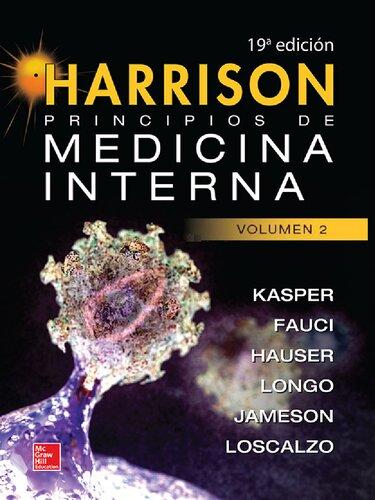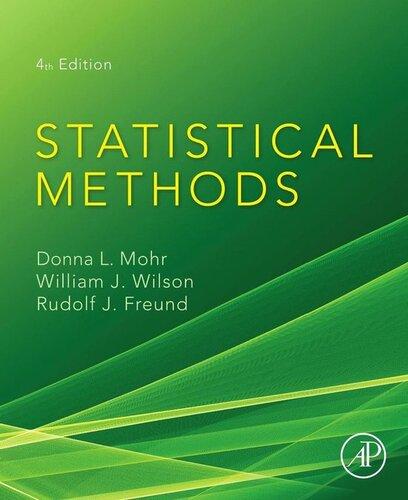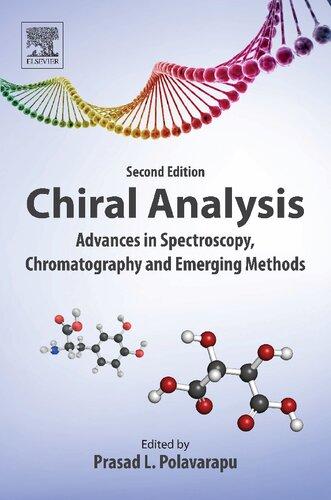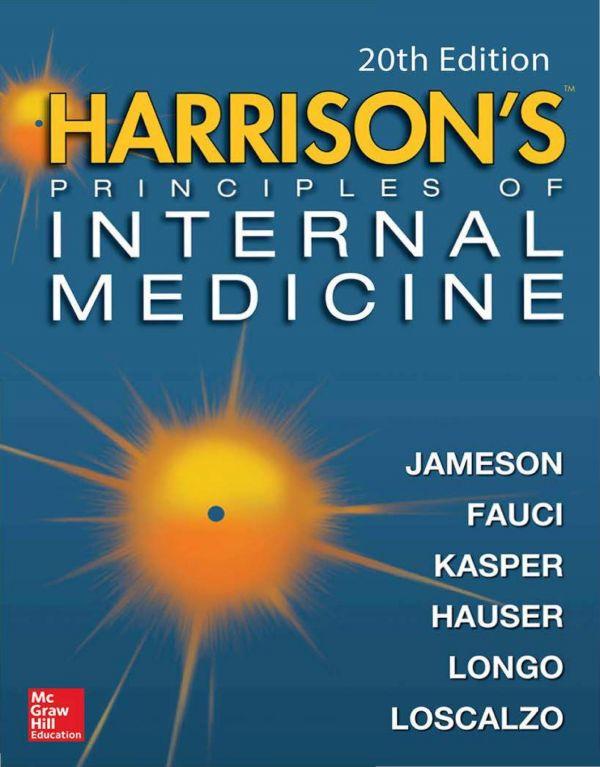PopulationEcologyinPractice
Editedby DennisL.Murray
TrentUniversity
Peterborough,Ontario,Canada
BrettK.Sandercock
NorwegianInstituteforNatureResearch Trondheim,Trøndelag,Norway
Thiseditionfirstpublished2020 ©2020JohnWiley&SonsLtd
Allrightsreserved.Nopartofthispublicationmaybereproduced,storedinaretrievalsystem,ortransmitted,inanyformorbyanymeans,electronic, mechanical,photocopying,recordingorotherwise,exceptaspermittedbylaw.Adviceonhowtoobtainpermissiontoreusematerialfromthis titleisavailableathttp://www.wiley.com/go/permissions.
TherightofDennisL.MurrayandBrettK.Sandercocktobeidentifiedastheauthorsoftheeditorialmaterialinthisworkhasbeenassertedin accordancewithlaw.
RegisteredOffices
JohnWiley&Sons,Inc.,111RiverStreet,Hoboken,NJ07030,USA
JohnWiley&SonsLtd,TheAtrium,SouthernGate,Chichester,WestSussex,PO198SQ,UK
EditorialOffice
9600GarsingtonRoad,Oxford,OX42DQ,UK
Fordetailsofourglobaleditorialoffices,customerservices,andmoreinformationaboutWileyproductsvisitusatwww.wiley.com.
Wileyalsopublishesitsbooksinavarietyofelectronicformatsandbyprint-on-demand.Somecontentthatappearsinstandardprintversions ofthisbookmaynotbeavailableinotherformats.
LimitofLiability/DisclaimerofWarranty
Whilethepublisherandauthorshaveusedtheirbesteffortsinpreparingthiswork,theymakenorepresentationsorwarrantieswithrespectto theaccuracyorcompletenessofthecontentsofthisworkandspecificallydisclaimallwarranties,includingwithoutlimitationanyimpliedwarranties ofmerchantabilityorfitnessforaparticularpurpose.Nowarrantymaybecreatedorextendedbysalesrepresentatives,writtensalesmaterialsor promotionalstatementsforthiswork.Thefactthatanorganization,website,orproductisreferredtointhisworkasacitationand/orpotentialsource offurtherinformationdoesnotmeanthatthepublisherandauthorsendorsetheinformationorservicestheorganization,website,orproductmay provideorrecommendationsitmaymake.Thisworkissoldwiththeunderstandingthatthepublisherisnotengagedinrenderingprofessional services.Theadviceandstrategiescontainedhereinmaynotbesuitableforyoursituation.Youshouldconsultwithaspecialistwhereappropriate. Further,readersshouldbeawarethatwebsiteslistedinthisworkmayhavechangedordisappearedbetweenwhenthisworkwaswrittenandwhen itisread.Neitherthepublishernorauthorsshallbeliableforanylossofprofitoranyothercommercialdamages,includingbutnotlimitedto special,incidental,consequential,orotherdamages.
LibraryofCongressCataloging-in-PublicationData
Names:Murray,Dennis,1966– editor.|Sandercock,BrettK.(BrettKevin), 1966– editor.
Title:Populationecologyinpractice/editedbyDennisMurrayandBrett K.Sandercock.
Description:FirstEdition.|Hoboken:Wiley-Blackwell,2019.|Includes bibliographicalreferencesandindex.
Identifiers:LCCN2019013320(print)|LCCN2019980192(ebook)|ISBN 9780470674147(Paperback)|ISBN9781119574620(eBook)|ISBN 9781119574644(PDF)
Subjects:LCSH:Population–Environmentalaspects.|Populationecology.| Nature–Effectofhumanbeingson.|Sustainabledevelopment.
Classification:LCCHB849.415P65852019(print)|LCCHB849.415(ebook) |DDC304.2–dc23
LCrecordavailableathttps://lccn.loc.gov/2019013320
LCebookrecordavailableathttps://lccn.loc.gov/2019980192
CoverDesign:Wiley
CoverImage:©CopyrightMichaelCummings/GettyImages
Setin10/12ptWarnockbySPiGlobal,Pondicherry,India
10987654321
ToDylan,andtoNate,Eilish,andTiernan
Contents
Contributors xvii
Preface xxi
AbouttheCompanionWebsite xxiii
PartIToolsforPopulationBiology 1
1HowtoAskMeaningfulEcologicalQuestions 3 CharlesJ.Krebs
1.1WhatProblemsDoPopulationEcologistsTrytoSolve? 3
1.2WhatApproachesDoPopulationEcologistsUse? 6
1.2.1GeneratingandTestingHypothesesinPopulationEcology 10
1.3GeneralityinPopulationEcology 11
1.4FinalThoughts 12 References 13
2FromResearchHypothesistoModelSelection:AStrategyforRobustInferenceinPopulationEcology 17 DennisL.Murray,GuillaumeBastille-Rousseau,LynneE.Beaty,MeganL.Hornseth,JeffreyR.Rowand DanielH.Thornton
2.1Introduction 17
2.1.1InductiveMethods 18
2.1.2Hypothetico-deductiveMethods 19
2.1.3MultimodelInference 20
2.1.4BayesianMethods 22
2.2WhatConstitutesaGoodResearchHypothesis? 22
2.3MultipleHypothesesandInformationTheoretics 24
2.3.1HowManyAreTooManyHypotheses? 25
2.4FromResearchHypothesistoStatisticalModel 26
2.4.1FunctionalRelationshipsBetweenVariables 26
2.4.2InteractionsBetweenPredictorVariables 26
2.4.3NumberandStructureofPredictorVariables 27
2.5ExploratoryAnalysisandHelpfulRemedies 28
2.5.1ExploratoryAnalysisandDiagnosticTests 28
2.5.2MissingData 28
2.5.3Inter-relationshipsBetweenPredictors 30
2.5.4InterpretabilityofModelOutput 31
2.6ModelRankingandEvaluation 32
2.6.1ModelSelection 32
2.6.2MultimodelInference 36
2.7ModelValidation 39
2.8SoftwareTools 41
2.9OnlineExercises 41
2.10FutureDirections 41 References 42
PartIIPopulationDemography 47
3EstimatingAbundanceorOccupancyfromUnmarkedPopulations 49
BrettT.McClintockandLenThomas
3.1Introduction 49
3.1.1WhyCollectDatafromUnmarkedPopulations? 49
3.1.2RelativeIndicesandDetectionProbability 50
3.1.2.1PopulationAbundance 50
3.1.2.2SpeciesOccurrence 51
3.1.3HierarchyofSamplingMethodsforUnmarkedIndividuals 52
3.2EstimatingAbundance(orDensity)fromUnmarkedIndividuals 53
3.2.1DistanceSampling 53
3.2.1.1ClassicalDistanceSampling 54
3.2.1.2Model-BasedDistanceSampling 57
3.2.2ReplicatedCountsofUnmarkedIndividuals 61
3.2.2.1SpatiallyReplicatedCounts 61
3.2.2.2RemovalSampling 63
3.3EstimatingSpeciesOccurrenceunderImperfectDetection 64
3.3.1Single-SeasonOccupancyModels 65
3.3.2Multiple-SeasonOccupancyModels 66
3.3.3OtherDevelopmentsinOccupancyEstimation 68
3.3.3.1SiteHeterogeneityinDetectionProbability 68
3.3.3.2OccupancyandAbundanceRelationships 68
3.3.3.3MultistateandMultiscaleOccupancyModels 68
3.3.3.4MetapopulationOccupancyModels 69
3.3.3.5FalsePositiveOccupancyModels 70
3.4SoftwareTools 70
3.5OnlineExercises 71
3.6FutureDirections 71 References 73
4AnalyzingTimeSeriesData:Single-SpeciesAbundanceModeling 79
StevenDelean,ThomasA.A.Prowse,JoshuaV.RossandJonathanTuke
4.1Introduction 79
4.1.1PrincipalApproachestoTimeSeriesAnalysisinEcology 80
4.1.2ChallengestoTimeSeriesAnalysisinEcology 82
4.2TimeSeries(ARMA)Modeling 83
4.2.1TimeSeriesModels 83
4.2.2AutoregressiveMovingAverageModels 83
4.3RegressionModelswithCorrelatedErrors 87
4.4PhenomenologicalModelsofPopulationDynamics 88
4.4.1DeterministicModels 89
4.4.1.1ExponentialGrowth 89
4.4.1.2ClassicODESingle-SpeciesPopulationModelsthatIncorporateDensityDependence 90
4.4.2Discrete-TimePopulationGrowthModelswithStochasticity 92
4.5State-spaceModeling 93
4.5.1GompertzState-spacePopulationModel 94
4.5.2NonlinearandNon-GaussianState-spacePopulationModels 96
4.6SoftwareTools 96
4.7OnlineExercises 97
4.8FutureDirections 97 References 98
5EstimatingAbundancefromCapture-RecaptureData 103
J.AndrewRoyleandSarahJ.Converse
5.1Introduction 103
5.2GenesisofCapture-RecaptureData 104
5.3TheBasicClosedPopulationModels: M0, Mt, Mb 104
5.4InferenceStrategies 105
5.4.1LikelihoodInference 105
5.4.2BayesianAnalysis 107
5.4.3OtherInferenceStrategies 108
5.5ModelswithIndividualHeterogeneityinDetection 108
5.5.1Model Mh 108
5.5.2IndividualCovariateModels 109
5.5.2.1TheFullLikelihood 109
5.5.2.2Horvitz-ThompsonEstimation 110
5.5.3DistanceSampling 110
5.5.4SpatialCapture-RecaptureModels 110
5.5.4.1TheState-space 112
5.5.4.2InferenceinSCRModels 112
5.6StratifiedPopulationsorMultisessionModels 112
5.6.1NonparametricEstimation 112
5.6.2HierarchicalCapture-RecaptureModels 113
5.7ModelSelectionandModelFit 113
5.7.1ModelSelection 113
5.7.2Goodness-of-Fit 114
5.7.3WhattoDoWhenYourModelDoesNotFit 115
5.8OpenPopulationModels 115
5.9SoftwareTools 116
5.10OnlineExercises 117
5.11FutureDirections 118 References 119
6EstimatingSurvivalandCause-specificMortalityfromContinuousTimeObservations 123
DennisL.MurrayandGuillaumeBastille-Rousseau
6.1Introduction 123
6.1.1AssumptionofNoHandling,MarkingorMonitoringEffects 125
6.1.2CauseofDeathAssessment 125
6.1.3HistoricalOriginsofSurvivalEstimation 126
6.2SurvivalandHazardFunctionsinTheory 127
6.3DevelopingContinuousTimeSurvivalDatasets 130
6.3.1DatasetStructure 131
6.3.2Right-censoring 133
6.3.3DelayedEntryandOtherTimeConsiderations 133
6.3.4SamplingHeterogeneity 134
6.3.5Time-dependentCovariates 135
6.4SurvivalandHazardFunctionsinPractice 135
6.4.1MayfieldandHeisey –FullerSurvivalEstimation 135
6.4.2Kaplan–MeierEstimator 136
6.4.3Nelson–AalenEstimator 138
6.5StatisticalAnalysisofSurvival 138
6.5.1SimpleHypothesisTests 138
6.5.2CoxProportionalHazards 139
6.5.3ProportionalityofHazards 140
6.5.4ExtendedCPH 142
6.5.5FurtherExtensions 143
6.5.6ParametricModels 143
6.6Cause-specificSurvivalAnalysis 144
6.6.1TheCaseforCause-specificMortalityData 144
6.6.2Cause-specificHazardsandMortalityRates 145
6.6.3CompetingRisksAnalysis 146
6.6.4AdditiveVersusCompensatoryMortality 147
6.7SoftwareTools 149
6.8OnlineExercises 149
6.9FutureDirections 149 References 151
7Mark-RecaptureModelsforEstimationofDemographicParameters 157
BrettK.Sandercock
7.1Introduction 157
7.2LiveEncounterData 158
7.3EncounterHistoriesandModelSelection 159
7.4ReturnRates 163
7.5Cormack–Jolly–SeberModels 164
7.6TheChallengeofEmigration 164
7.7ExtendingtheCJSModel 167
7.8Time-since-markingandTransientModels 167
7.9TemporalSymmetryModels 168
7.10Jolly–SeberModel 169
7.11MultilevelModels 169
7.12SpatiallyExplicitModels 170
7.13RobustDesignModels 170
7.14Mark-resightModels 171
7.15YoungSurvivalModel 172
7.16MultistateModels 173
7.17MultistateModelswithUnobservableStates 175
7.18MultieventModelswithUncertainStates 176
7.19JointModels 177
7.20IntegratedPopulationModels 178
7.21Frequentistvs.BayesianMethods 178
7.22SoftwareTools 179
7.23OnlineExercises 180
7.24FutureDirections 180 References 180
PartIIIPopulationModels 191
8ProjectingPopulations 193
StéphaneLegendre
8.1Introduction 193
8.2TheLifeCycleGraph 194
8.2.1Description 194
8.2.2Construction 194
8.3MatrixModels 198
8.3.1TheProjectionEquation 198
8.3.2DemographicDescriptors 200
8.3.3Sensitivities 200
8.4AccountingfortheEnvironment 202
8.5DensityDependence 203
8.5.1Density-dependentScalarModels 203
8.5.2Density-dependentMatrixModels 203
8.5.3ParameterizingDensityDependence 204
8.5.4Density-dependentSensitivities 204
8.6EnvironmentalStochasticity 204
8.6.1ModelsoftheEnvironment 204
8.6.2StochasticDynamics 205
8.6.3ParameterizingEnvironmentalStochasticity 208
8.7SpatialStructure 208
8.8DemographicStochasticity 209
8.8.1BranchingProcesses 209
8.8.2Two-sexModels 210
8.9DemographicHeterogeneity 210
8.9.1IntegralProjectionModels 211
8.10SoftwareTools 212
8.11OnlineExercises 212
8.12FutureDirections 212 References 212
9CombiningCountsofUnmarkedIndividualsandDemographicDataUsingIntegratedPopulationModels 215 MichaelSchaub
9.1Introduction 215
9.2ConstructionofIntegratedPopulationModels 216
9.2.1DevelopmentofaPopulationModel 216
9.2.2ConstructionoftheLikelihoodforDifferentDatasets 218
9.2.3TheJointLikelihood 220
9.2.4FittinganIntegratedPopulationModel 221
9.3ModelExtensions 223
9.3.1EnvironmentalStochasticity 223
9.3.2DirectDensityDependence 224
9.3.3OpenPopulationModelsandOtherExtensions 226
9.3.4AlternativeObservationModels 226
9.4InferenceAboutPopulationDynamics 227
9.4.1RetrospectivePopulationAnalyses 227
9.4.2PopulationViabilityAnalyses 227
9.5MissingData 229
9.6Goodness-of-fitandModelSelection 230
9.7SoftwareTools 230
9.8OnlineExercises 231
9.9FutureDirections 231 References 232
10IndividualandAgent-basedModelsinPopulationEcologyandConservationBiology 237 EloyRevilla
10.1IndividualandAgent-basedModels 237
10.1.1WhatanIBMIsandWhatitIsNot 238
10.1.2WhentoUseanIndividual-basedModel 238
10.1.3CriticismsontheUseofIBMs:AdvantagesorDisadvantages 239
10.2BuildingtheCoreModel 239
10.2.1DesignPhase:TheQuestionandtheConceptualModel 239
10.2.2ImplementationoftheCoreModel 240
10.2.3IndividualsandTheirTraits 240
10.2.4FunctionalRelationships 244
10.2.5TheEnvironmentandItsRelevantProperties 244
10.2.6TimeandSpace:Domains,Resolutions,BoundaryConditions,andScheduling 244
10.2.7SingleModelRun,DataInput,ModelOutput 246
10.3ProtocolsforModelDocumentation 247
10.3.1TheOverview,DesignConcepts,andDetailsProtocol 249
10.4ModelAnalysisandInference 249
10.4.1ModelDebuggingandCheckingtheConsistencyofModelBehavior 249
10.4.2ModelStructuralUncertaintyandSensitivityAnalyses 252
10.4.3ModelSelection,Validation,andCalibration 254
10.4.4AnsweringyourQuestions 256
10.5SoftwareTools 257
10.6OnlineExercises 257
10.7FutureDirections 257 References 258
PartIVPopulationGeneticsandSpatialEcology 261
11GeneticInsightsintoPopulationEcology 263
JeffreyR.RowandStephenC.Lougheed
11.1Introduction 263
11.2TypesofGeneticMarkers 264
11.2.1MitochondrialDNA 264
11.2.2NuclearIntrons 265
11.2.3Microsatellites 265
11.2.4SingleNucleotidePolymorphisms 265
11.2.5Next-generationSequencing 265
11.3QuantifyingPopulationStructurewithIndividual-basedAnalyses 266
11.3.1BayesianClustering 267
11.3.2MultivariateAnalysisofGeneticDataThroughOrdinations 269
11.3.3SpatialAutocorrelationAnalysis 271
11.3.4Population-levelConsiderations 273
11.4EstimatingPopulationSizeandTrends 273
11.4.1EstimatingCensusPopulationSize 277
11.4.2EstimatingContemporaryEffectivePopulationSizewithOneSampleMethods 277
11.4.3EstimatingContemporaryEffectivePopulationSizewithTemporalSampling 279
11.4.4DiagnosingRecentPopulationBottlenecks 280
11.5EstimatingDispersalandGeneFlow 281
11.5.1EstimatingDispersalandRecentGeneFlow 282
11.5.2EstimatingSustainedLevelsofGeneFlow 282
11.5.3NetworkAnalysisofGeneticConnectivity 283
11.6SoftwareTools 284
11.6.1Individual-basedAnalysis 284
11.6.2Population-basedPopulationSize 285
11.6.3DispersalandGeneFlow 286
11.7OnlineExercises 286
11.8FutureDirections 286
Glossary 287 References 289
12SpatialStructureinPopulationData 299
Marie-JoséeFortin
12.1Introduction 299
12.2DataAcquisitionandSpatialScales 302
12.3PointDataAnalysis 302
12.4AbundanceDataAnalysis 304
12.5SpatialInterpolation 306
12.6SpatialDensityMapping 308
12.7MultipleScaleAnalysis 308
12.8SpatialRegression 311
12.9SoftwareTools 312
12.10OnlineExercises 312
12.11FutureDirections 312 Glossary 312 References 313
13AnimalHomeRanges:Concepts,Uses,andEstimation 315 JonS.Horne,JohnFieberg,LucaBörger,JanetL.Rachlow,JustinM.CalabreseandChrisH.Fleming
13.1WhatIsaHomeRange? 315
13.1.1QuantifyingAnimalHomeRangesasaProbabilityDensityFunction 316
13.1.2WhyEstimateAnimalHomeRanges? 318
13.2EstimatingHomeRanges:PreliminaryConsiderations 319
13.3EstimatingHomeRanges:TheOccurrenceDistribution 321
13.3.1MinimumConvexPolygon 321
13.3.2KernelSmoothing 322
13.3.3ModelsBasedonAnimalMovements 323
13.3.4EstimationfromaOne-dimensionalPath 324
13.4EstimatingHomeRanges:TheRangeDistribution 324
13.4.1BivariateNormalModels 324
13.4.2TheSynopticModel 324
13.4.3MechanisticModels 325
13.4.4KernelSmoothing 326
13.5SoftwareTools 326
13.6OnlineExercises 327
13.7FutureDirections 327
13.7.1ChoosingaHomeRangeModel 327
13.7.2TheFutureofHomeRangeModeling 327 References 328
14AnalysisofResourceSelectionbyAnimals 333
JoshuaJ.Millspaugh,ChristopherT.Rota,RobertA.Gitzen,RobertA.Montgomery,ThomasW.Bonnot,JerroldL. Belant,ChristopherR.Ayers,DylanC.Kesler,DavidA.EadsandCatherineM.BodinofJachowski
14.1Introduction 333
14.2Definitions 335
14.2.1TerminologyandCurrenciesofUseandAvailability 335
14.2.2Use-availability,PairedUse-availability,UseandNon-use(Case-control),andUse-onlyDesigns 336
14.2.3DifferencesBetweenRSF,RSPF,andRUF 336
14.3ConsiderationsinStudiesofResourceSelection 338
14.3.1TwoImportantSamplingConsiderations:SelectingSampleUnitsandTimeofDay 338
14.3.2EstimatingtheNumberofAnimalsandLocationsNeeded 338
14.3.3LocationErrorandFixRateBiasResourceSelectionStudies 339
14.3.4ConsiderationofAnimalBehaviorinResourceSelectionStudies 339
14.3.5BiologicalSeasonsinResourceSelectionStudies 340
14.3.6ScalinginResourceSelectionStudies 340
14.3.7LinkingResourceSelectiontoFitness 341
14.4MethodsofAnalysisandExamples 342
14.4.1CompositionalAnalysis 342
14.4.2LogisticRegression 343
14.4.3SamplingDesignsforLogisticRegressionModeling 344
14.4.3.1RandomSamplingofUnitswithintheStudyArea 344
14.4.3.2RandomSamplingofUsedandUnusedUnits 344
14.4.3.3RandomSampleofUsedandAvailableSamplingUnits 345
14.4.4DiscreteChoiceModels 346
14.4.5PoissonRegression 347
14.4.6ResourceUtilizationFunctions 348
14.4.7EcologicalNicheFactorAnalysis 348
14.4.8MixedModels 349
14.5SoftwareTools 349
14.6OnlineExercises 350
14.7FutureDirections 350 References 351
15SpeciesDistributionModeling 359
DanielH.ThorntonandMichaelJ.L.Peers
15.1Introduction 359
15.1.1RelationshipofDistributiontoOtherPopulationParameters 362
15.1.2SpeciesDistributionModelsandtheNicheConcept 363
15.2BuildingaSpeciesDistributionModel 366
15.2.1SpeciesData 366
15.2.2EnvironmentalData 368
15.2.3ModelFitting 368
15.2.4InterpretationofModelOutput 371
15.2.5ModelAccuracy 372
15.3CommonProblemswhenFittingSpeciesDistributionModels 374
15.3.1Overfitting 374
15.3.2SampleSelectionBias 375
15.3.3BackgroundSelection 376
15.3.4Extrapolation 377
15.3.5ViolationofAssumptions 378 15.4RecentAdvances 378
15.4.1IncorporatingDispersal 378
15.4.2IncorporatingPopulationDynamics 379
15.4.3IncorporatingBioticInteractions 379 15.5SoftwareTools 381
15.5.1FittingandEvaluationofModels 381
15.5.2IncorporatingDispersalorPopulationDynamics 381
15.6OnlineExercises 381
15.7FutureDirections 381
References 383
16The R SoftwareforDataAnalysisandModeling 391
ClémentCalenge 391
16.1AnIntroductionto R 391
16.1.1TheNatureofthe R Language 391
16.1.2QualitiesandLimits 392
16.1.3 R forEcologists 392
16.1.4 R isanEnvironment 393
16.2Basicsof R 393
16.2.1SeveralBasicModesofData 394
16.2.2SeveralBasicTypesofObjects 395
16.2.3FindingHelpandInstallingNewPackages 398
16.2.4HowtoWriteaFunction 400
16.2.5The for loop 401
16.2.6TheConceptofAttributesand S3DataClasses 402
16.2.7TwoImportantClasses:TheClass factor andtheClass data.frame 404
16.2.8DrawingGraphics 406
16.2.9 S4Classes:WhyItIsUsefultoUnderstandThem 407
16.3OnlineExercises 410
16.4FinalDirections 410 References 411
Index 413
Contributors
ChristopherR.Ayers Wildlife,Fisheries,andAquaculture MississippiStateUniversity Starkville,MS,USA
GuillaumeBastille-Rousseau SchoolofBiologicalSciences SouthernIllinoisUniversity Carbondale,IL,USA
LynneE.Beaty DepartmentofBiology PennStateErie Erie,PA,USA
JerroldL.Belant CampFirePrograminWildlifeConservation CollegeofEnvironmentalScienceandForestry StateUniversityofNewYork Syracuse,NY,USA
CatherineM.BodinofJachowski DepartmentofForestryand EnvironmentalConservation ClemsonUniversity Clemson,SC,USA
ThomasW.Bonnot DepartmentofFisheriesand WildlifeSciences UniversityofMissouri Columbia,MO,USA
LucaBörger DepartmentofBiosciences CollegeofScience SwanseaUniversity Swansea,UnitedKingdom
JustinM.Calabrese DepartmentofBiology UniversityofMarylandCollegePark CollegePark,MD,USA
ClémentCalenge
DirectiondelaRechercheetdel’Expertise OfficeNationaldelaChasseetdelaFauneSauvage SaintBenoist,Auffargis,France
SarahJ.Converse U.S.GeologicalSurvey WashingtonCooperativeFishand WildlifeResearchUnit SchoolofEnvironmentalandForestSciences(SEFS)and SchoolofAquaticandFisherySciences(SAFS) UniversityofWashington Seattle,WA,USA
StevenDelean SchoolofBiologicalSciencesand theEnvironmentInstitute TheUniversityofAdelaide Adelaide,SouthAustralia,Australia
DavidA.Eads
U.S.GeologicalSurvey FortCollinsScienceCenter FortCollins,CO,USA
JohnFieberg DepartmentofFisheries WildlifeandConservationBiology UniversityofMinnesota St.Paul,MN,USA
ChrisH.Fleming SmithsonianConservationBiologyInstitute FrontRoyal,VA,USA
Marie-JoséeFortin DepartmentofEcologyandEvolutionaryBiology UniversityofToronto Toronto,Ontario,Canada
RobertA.Gitzen ForestryandWildlifeSciences AuburnUniversity Auburn,AL,USA
JonS.Horne IdahoDepartmentofFishandGame Boise,ID,USA
MeganL.Hornseth BorealisEcology ThunderBay,Ontario,Canada
DylanC.Kesler TheInstituteforBirdPopulations PointReyesStation,CA,USA
CharlesJ.Krebs DepartmentofZoology UniversityofBritishColumbia Vancouver,BritishColumbia,Canada
StéphaneLegendre InstitutdeBiologiede l’EcoleNormaleSupérieure(IBENS) LeCentreNationaldelaRecherche Scientifique(CNRS) Paris,France
StephenC.Lougheed DepartmentofBiology Queen’sUniversity Kingston,Ontario,Canada
BrettT.McClintock NOAANationalMarineMammalLaboratory AlaskaFisheriesScienceCenter NationalMarineFisheriesService Seattle,WA,USA
JoshuaJ.Millspaugh WildlifeBiologyProgram DepartmentofEcosystemand ConservationSciences UniversityofMontana Missoula,MT,USA
RobertA.Montgomery DepartmentofFisheriesandWildlife MichiganStateUniversity EastLansing,MI,USA
DennisL.Murray DepartmentofBiology TrentUniversity Peterborough,Ontario,Canada
MichaelJ.L.Peers DepartmentofBiologicalSciences UniversityofAlberta Edmonton,Alberta,Canada
ThomasA.A.Prowse SchoolofMathematicalSciences TheUniversityofAdelaide Adelaide,SouthAustralia,Australia
JanetL.Rachlow DepartmentofFishandWildlifeSciences UniversityofIdaho Moscow,ID,USA
EloyRevilla DepartmentofConservationBiology EstaciónBiológicadeDoñanaCSIC Sevilla,Spain
JoshuaV.Ross SchoolofMathematicalSciences TheUniversityofAdelaide Adelaide,SouthAustralia,Australia
ChristopherT.Rota WildlifeandFisheriesResourcesProgram SchoolofNaturalResources WestVirginiaUniversity Morgantown,WV,USA
JeffreyR.Row SchoolofEnvironment,Resources andSustainability,UniversityofWaterloo Waterloo,Ontario,Canada
J.AndrewRoyle U.S.GeologicalSurvey PatuxentWildlifeResearchCenter Laurel,MD,USA
BrettK.Sandercock DepartmentofTerrestrialEcology NorwegianInstituteforNatureResearch Trondheim,Norway
MichaelSchaub SwissOrnithologicalInstitute Sempach,Switzerland
LenThomas CentreforResearchintoEcologicaland EnvironmentalModelling SchoolofMathematicsandStatistics UniversityofSt.Andrews St.Andrews,UnitedKingdom
DanielH.Thornton SchoolofEnvironment WashingtonStateUniversity Pullman,WA,USA
JonathanTuke SchoolofMathematicalSciences TheUniversityofAdelaide Adelaide,SouthAustralia,Australia
Preface
Ourmotivationaseditorsforassemblingabookoncurrentmethodsinpopulationecologyarosefromourongoinginteractionswithgraduatestudentsandprofessionals inthefieldsofecology,conservationbiology,andwildlife management.Overthepastseveraldecades,researchin populationecologyhasdevelopedatarapidpace,from alargelydescriptivefielddominatedbyobservationand description,toamaturedisciplinethatemphasizesinnovativeandrobustanalysesofecologicalpatternsand processes.Manyrecentadvanceshavebeendrivenbypersistentknowledgegaps,nottheleastofwhichareurgent questionsaboutthekeydriversofpopulationdynamics andtheirecologicalrelevanceinthefaceofongoingglobal environmentalchange.Increasingly,populationecologistshaverecognizedthatkeyquestionsinecologyand evolutionarybiologymustbeinvestigatedusingthedata andanalyticalmethodsthatallowresearcherstomake robustinferencesaboutcausality.Atthesametime, advancesinsatelliteorGPS-basedtelemetry,noninvasive geneticsampling,automatedfieldphotography,andother newtechnologieshaverevolutionizedourabilitytocollect newdataontheoccurrence,abundance,anddistributions ofrareorelusiveorganismsundernaturalconditions. Emergingtechnologieshaveopenedupnewpossibilities fordatacollection,butmanyhavealsorequireddevelopmentofinnovativeapproachesfordataanalysis.Insome cases,newquantitativeapproacheshavebeenadopted directlyfromotherfieldsofresearchbutsometypesof datahaverequiredthedevelopmentofentirelynovelanalyticaltools.Improvementsinthecapacityofpersonaland cloud-basedcomputing,availabilityofProgramRand otherfreewarestatisticalpackages,andonlineresources forlearningandtroubleshootingnewstatisticalprocedureshaveledtotremendousimprovementsinthe potentialcapacityfordataanalysisinpopulationecology. Developmentsinpopulationecologyhaveparalleled improvementsindataqualityandanalysisingenomics, datasciences,andotherscientificdisciplines.Still,populationecologyhasbeentransformedinrecentdecadesso thatourcurrentabilitytoanswerlongstandingandelusivequestionsgreatlysurpasseswhatcouldhavebeen imaginableevenashorttimeago.
Developmentofnewtoolsforecologicalanalysishas beenexcitingtowitnessbutpresentsachallengefor bothnewandseasonedecologistswhowouldliketo staycurrentwithavailabletechnologiesandanalytical approaches.Duringourownformativeyearsasgraduate studentsafewdecadesago,theprevailingquantitative methodsfordataanalysisconsistedmainlyofstatistical testsinafrequentistframeworkthatwereoriginally designedforanalysisofdatafromcontrolledexperiments andbalancedstudydesigns.Basictestslikeanalysisof varianceandregressionwerefamiliarbecauseoftheir extensivecoverageinundergraduatecourses,orelse theywerereadilyadoptedfollowingfocusedreadingor trialanderror.Evenspecializedtechniqueslikepopulationestimationorhabitatselectionanalysisweremostly accessibleusingoff-the-shelfanalyticalapproaches. Accordingly,atthetimemostecologistswerenotunduly challengedtoconductdataanalysisthatmetcontemporarystandards.However,ecologicalsystemsarerarely governedbyfactorsthatconformtocontrolledconditions,andthereforeecologicalresearchrarelyyieldsfield datathattrulyfitsstandardassumptionsofindependence,normality,andlackofbias.Moreover,thesheer volume,structure,andcomplexityofecologicaldatacollectedinmanyfieldstudiesprecludestandardstatistical approaches.Newquantitativemethodsinecologyoften deviatesubstantiallyfromthestandardapproachesthat formthebasisofundergraduatetraininginstatistics, andecologistsmaybeleftscramblingtocorrectlyidentify andimplementanappropriateanalyticaltechnique.The correctapplicationofcontemporarymethodsfordata analysisisincreasinglyaprerequisiteforpublication andforimplementationofeffectivemanagementpolicy inecology.
Oureditedvolumeisprimarilyaimedatgraduatestudentsandearlycareerprofessionalswhomaybeembarkingontheirfirstattempttoanalyzeecologicaldatausing contemporarymethods.Weaimedtoassembleaseries ofchaptersthatreviewthestateofknowledgeinthecore areasofpopulationecology,andourselectionoftopics andauthorswaspurposefultocoverthemainareasby expertsinthefield.Ourfinalsubmissionsincluded
16manuscriptsfrom39contributorsworkingin8differentcountries.Ouraimwasforeverychaptertoserveasa stand-aloneassessmentfordifferenttopicsinpopulation ecology,includingprosandconsofrelatedquantitative methods,basicassumptionsandlimitationswhenderivinginferencefromagivenapproach,andsomeofthe potentialpitfallsintheapplicationofavailabletechniques.Perhapsunavoidably,thechaptersincludesome biastowardmethodsthatareespeciallyrelevantforuse withwildlifespeciesandforusingdatathathavebeen collectedthroughnewermonitoringtechnologies.Nevertheless,manyofthegeneralconceptsandapproaches coveredinourcontributedchaptershavebroadrelevance toadiversityofresearchquestionsandstudysystems.
The16chaptersofourbookareorganizedintofivesections.Thefirstsectionbeginswithtwochaptersthatprovideaframeworkforaskingrelevantquestionsinecology, includinghowresearchstudiescanbebestdesignedto deriverobustinference.Thesecondsectionassembles fivechapterscoveringavarietyofanalyticalapproaches inpopulationdemographyandpopulationtimeseries analysis;thesetopicsnormallyformtherequisitebasis ofmostinvestigationsintopopulationstatusandtrend. Theanalyticalapproachesdifferinwhethertheyare basedonclosedoropenpopulationmodels,useencounterhistoriesfrommarkedorunmarkedindividuals,or controlforsituationswheredetectionmaybeperfect orimperfect.Thethirdsectionhighlightspopulationlevelanalysis,includingnewerapproachesthatuseintegrativeandindividual-basedmodelstounderstandpopulationdriversandforecasttheirpotentialchange.The fourthsectionincludesfivechaptersthataddressgenetic andspatialapproachesinpopulationanalysis,covering topicslikehomerangeandresourceselectionanalysis andspeciesdistributionmodeling.
Thisvolumeisintendedtoprovideanoverviewfor researchersusingavarietyofanalyticaltoolsandplatforms.Importantly,theRstatisticalsoftwareplatform hasbeentransformativetodataanalysisinecology,and tothatendthefinalchapterprovidesanecologically focusedoverviewofbasicnomenclatureanddatamanagementusingRsoftware.ChaptersaresupportedbyacompendiumofonlineexercisesinRthatprovideworked throughexamplesthatreinforcetopicscoveredinindividualchapters.Theintentisforexercisestoprovidereaders withboththenecessarybackgroundtoimplementmore commonanalyticalapproaches,aswellassamplecode inRthatcanbeadaptedtostarttheirowndataanalysis. Allonlineexercisescanbeaccessedfromthepublisher’ s website(www.wiley.com/go/MurrayPopulationEcology).
Oureditedbookwouldnothaveseenthelightofday withoutthesignificanteffortsofanumberofpeopleto whomweareindebted.WethankGuillaumeChapron, whobeganthisjourneywithusandhelpedstartthe
editorialprocessofselectingtopicsforthedifferent chaptersandinvitingcontributors.Wethankallofthe contributorswhocontributedtheirworktothisvolume forsharingwithusavisionforthebook,mostlyadhering tooureditorialrequests,peer-reviewingeachother’ s chapters,andforworkinghardtoimprovethequality oftheirchapters.Workingonaneditedvolumecanprovidenewappreciationoftheoldadagethatacaravanis onlyasfastastheslowestcamel.Wethankthecontributorsfortheirsustainedeffortsandcommitment,butespeciallyfortheirpatienceingraciouslyacceptingdelays thatarosewhiletwoslowcamelsworkedtokeepthe editorialprocessontrack.Specialthankstoallofthe externalreviewerswhoprovidedanonymousreviewsof chapters,includingthemanygraduatestudentswho servedastestgroupsforthechaptersandtheonlineexercises.Thestudentsprovidedmanyusefulcommentsthat helpedcalibratethevolumeforitsintendedaudience. WealsohighlightthevaluablecontributionbyPatHeney, whostandardizedandtestedalltheonlineexercisespriorto theirrelease.Likewise,adebtofgratitudeisowedtoSam Sonnegaforhelpwithindexingthecompletevolume. ThestaffatWiley-Blackwell,especiallyAnupamaSreekanth,KavithaChandrasekarandEmmaCole,provided valuableassistanceinsupportofourvisionforthebook. Last,wethankH.DeanCluffforbeinganinitialsource ofinspirationandforanexplodingcanofsardines.
Ourhopeisthatoureditedbookwillcontributetoa growingbodyofliteraturethatguidesresearchersin therigorousanalysisofecologicaldata.Thecurrentstate ofourplanet,andofthespeciesandecosystemsthathave captivatedthefascinationofpopulationecologistsfor decades,areundergraveperil.Thequantitativemethods describedinthisvolumeprovideavaluablesetoftools foraddressingsomeofthecurrentandemergingenvironmentalproblemsthatwillcommandhumanity’ s attentionfortheforeseeablefuture.Ourbookwillbea successifitprovidesanewgenerationofearlycareer researcherswiththenecessarytoolstotacklesomeof theseproblems.
Inrecognitionofthedauntingenvironmentalchallenges facingthisandfuturegenerations,theeditorsarepleased todonateroyaltiesfromthebooktoconservationactivities ofWildlifeConservationSocietyCanada.Formore informationaboutthisorganization,pleasevisitwww. wcscanada.org.
DennisL.Murray TrentUniversity Peterborough,Ontario,Canada
BrettK.Sandercock NorwegianInstituteforNatureResearch Trondheim,Trøndelag,Norway



